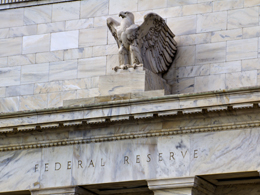 The important thing about yesterday’s Federal Reserve statement was—in the words of Sherlock Holmes—the dog that did not bark. The Fed's statement included the “considerable time” language that some, including me, had been obsessing over.
The important thing about yesterday’s Federal Reserve statement was—in the words of Sherlock Holmes—the dog that did not bark. The Fed's statement included the “considerable time” language that some, including me, had been obsessing over.
For those of you with lives, perhaps some clarification would help. As the Fed continues to move toward a more normal monetary policy, we're seeing two things:
- A reduction in the amount of bonds it buys. This project is well under way and was widely expected to continue on the same course—which it did. Bond purchases were reduced, and the Fed confirmed that it expected to stop entirely at the next meeting. No surprises there.
- A looming question as to when rates will rise. “Considerable time” has been part of the Fed's response to this question for the past, well, considerable time. Per a prior press conference, the market thinks it knows that a “considerable time” means about six months, putting the rate increase sometime between March and June of next year. Any change in the Fed's language could mean rates may rise sooner than that, which would be a big deal.
The timing question is on the table because the economy has continued to improve more quickly than the Fed has expected, raising the risks of a faster Fed exit from the money markets. Arguably, the Fed should increase rates more quickly, but the numbers are pretty evenly balanced, so analysts were not really sure.
The purpose of “considerable time” language
The Fed included “considerable time” in yesterday’s statement to avoid rattling the markets. But the language also had a more subtle message. The Fed knows that the market thinks “considerable time” means six months. By confirming that they expected to end bond purchases in October, and by leaving this language in place, the committee members indirectly told the market that rates are likely to start rising in the first half of next year.
The Fed did some other things that, while not immediate news, also set the stage for rising rates. For the first time, for example, the Fed put out a fairly detailed outline of its exit plans. Despite all the questions in the air, the Fed is now planning its exit and wants the country to know it.
A big step for the Fed
It is now a question of how quickly rather than when or if the Fed will exit. By including the phrase “considerable time,” the Fed managed to get its intention to raise rates, the likely schedule, and the exit plans all out in public without disrupting the markets. Pretty slick.
Reading the Federal Reserve statement, it looks like the Fed believes that the economy is in a sustainable recovery, and its job is now to get out of the way. The markets are interpreting this as good news, which means the Fed succeeded in its aims. Economic recovery will support the markets, and a measured—but slow—exit will create less disruption.
Overall, there really is no news. Things continue as expected. In many ways, this represents a triumph for the Fed and for Ben Bernanke.


 Print
Print

